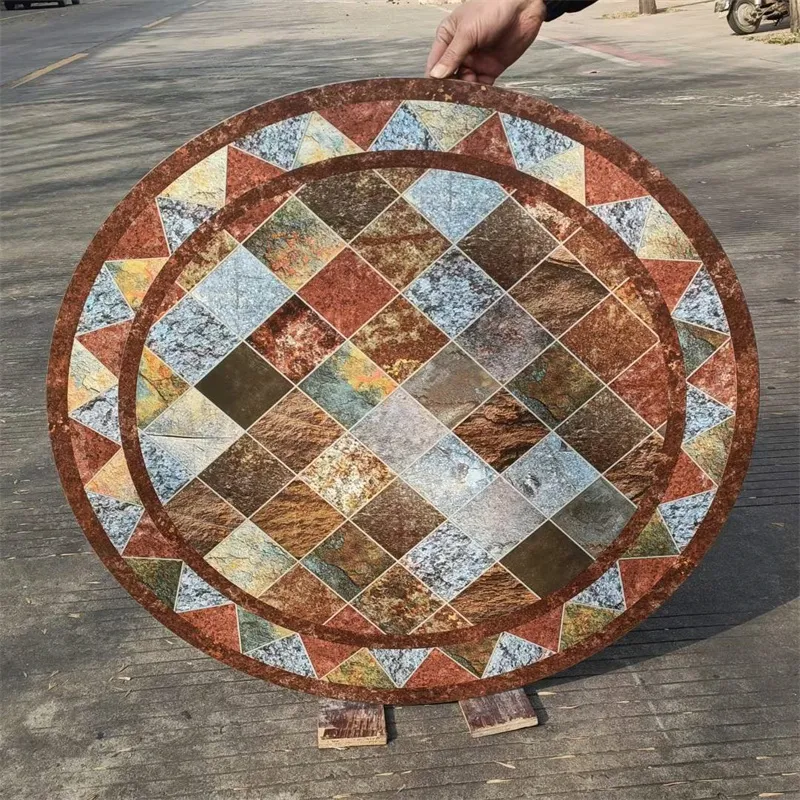Dec . 05, 2024 14:58 Back to list
coloured patterned glass
The Allure of Coloured Patterned Glass A Journey Through Art and History
Coloured patterned glass has captivated the imagination of artists, architects, and artisans for centuries. This vibrant form of glass art blends function with beauty, creating pieces that not only serve utilitarian purposes but also enrich our lives through their intricate designs and hues. From stained glass windows in medieval cathedrals to contemporary sculptures, coloured patterned glass has evolved into a multifaceted medium that reflects the cultural and artistic trends of each era.
Historically, the origins of coloured patterned glass can be traced back to the Roman Empire, where glassmakers began experimenting with various mineral additives to produce vivid colors. The technique flourished during the Byzantine period, particularly in the creation of mosaics and decorative windows. The art of glassblowing further advanced in the Middle Ages, giving rise to exquisite stained glass windows in Gothic cathedrals, which served as both light sources and storytelling mediums. These windows not only illuminated sacred spaces but also depicted biblical scenes and saints, offering a visual narrative that educated the largely illiterate population of the time.
The combination of color and pattern within glass is not merely aesthetic; it carries significant symbolic meanings. In many cultures, different colors evoke various emotions and connotations. For instance, blue often represents tranquility and peace, while red might symbolize passion and vitality. Patterns such as floral motifs, geometric shapes, and intricate designs often work to amplify these meanings, making each piece of coloured patterned glass a unique storyteller. The interplay of light through these patterns creates ever-changing reflections, casting a kaleidoscope of colors into the spaces they occupy.
As we move into the modern era, the appreciation and production of coloured patterned glass have shifted. The Arts and Crafts movement in the late 19th century, with artists like Louis Comfort Tiffany, redefined glass art, emphasizing handcrafted techniques that showcased the beauty of imperfections. Tiffany glass, known for its vivid colors and intricate designs, used copper foil instead of lead came, allowing for more detailed patterns and a richer array of colors. This period marked a significant turning point, pushing the boundaries of what patterned glass could achieve in terms of artistic expression.
coloured patterned glass

Today, contemporary artists continue to innovate within this medium, using technology and modern techniques to expand the possibilities of coloured patterned glass. Innovations such as kiln-forming and glass casting have allowed artists to create complex, three-dimensional pieces that challenge traditional notions of glass as a medium. Moreover, contemporary glass artists often draw from diverse cultural influences, incorporating elements from various traditions to create unique, hybrid styles. This melding of techniques and cultures results in works that resonate not just with the aesthetic but also with a sense of global interconnectedness.
Architects have also embraced coloured patterned glass, using it in a myriad of ways to add vibrancy to modern buildings. From storefronts to public art installations, patterned glass can transform ordinary spaces into extraordinary environments. The use of glass in architecture allows for the infusion of natural light into interiors, creating dynamic visual experiences while maintaining privacy. Notable buildings, such as the Seattle Central Library and the National Gallery of Canada, showcase striking uses of coloured glass, illustrating how it can enhance structural design.
Moreover, the environmental impact of glass production has become a focal point of discussion among contemporary artists and manufacturers. With a growing emphasis on sustainability, many artisans now prioritize recycled materials and eco-friendly practices. This shift not only addresses environmental concerns but also fosters a deeper appreciation for the artistry of coloured patterned glass, as each piece can be seen as part of a larger narrative about consumption and resource stewardship.
In conclusion, coloured patterned glass stands as a testament to human creativity and cultural expression. Its rich history and ongoing evolution reflect our ever-changing relationship with art and design. Whether seen in the delicate hues of a stained glass window or the bold shapes of a modern installation, coloured patterned glass invites us to engage with the world around us, blending light, color, and pattern into a harmonious celebration of beauty and creativity. As we look to the future, this storied medium will undoubtedly continue to inspire and provoke thought, reminding us of the power of artistic expression across time and space.
-
Safety and Style with Premium Laminated Glass Solutions
NewsJun.24,2025
-
Reinvents Security with Premium Wired Glass
NewsJun.24,2025
-
Premium Float Glass Line for Modern Architecture
NewsJun.24,2025
-
Low Emissivity Glass for Energy-Efficient Architecture
NewsJun.24,2025
-
High-Performance Insulated Glass Solutions for Modern Architecture
NewsJun.24,2025
-
Elevates Interior Style with Premium Silver Mirror
NewsJun.24,2025
Related PRODUCTS














